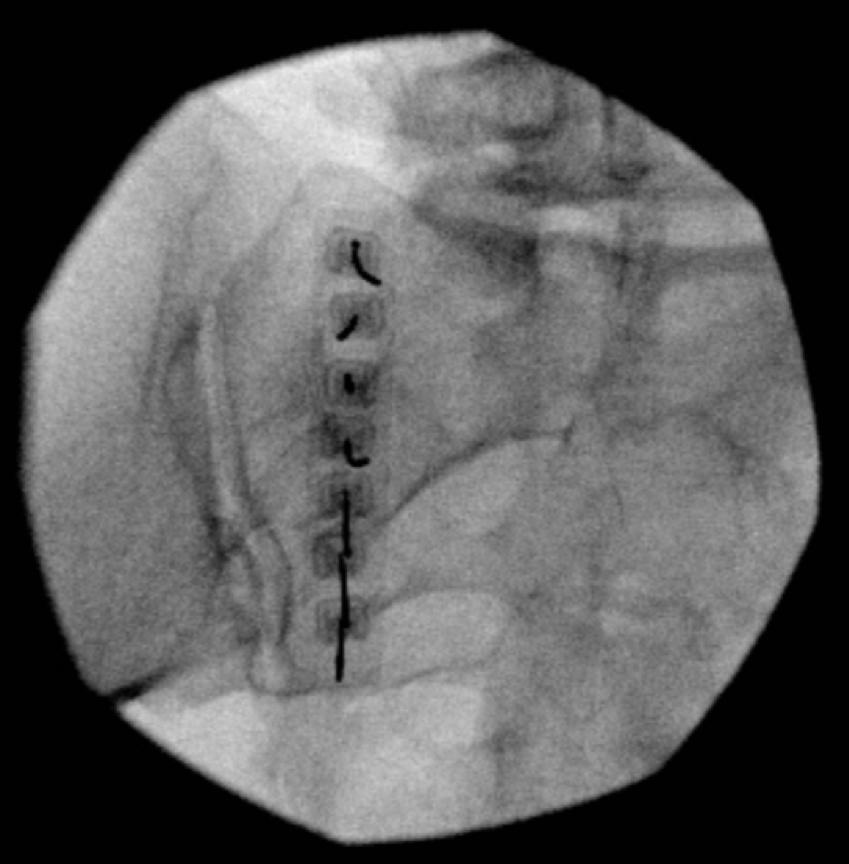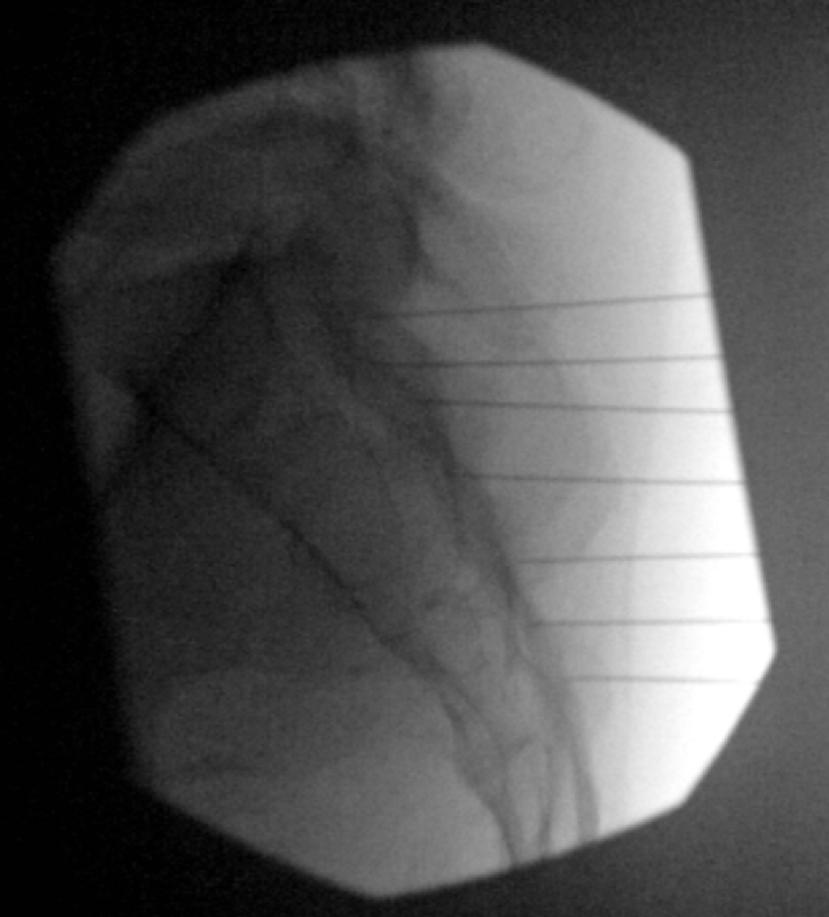
5 minute read
Radiofrequency Ablation for Chronic Lower Back Pain
Chronic low back pain is one of the most common reasons why patients seek medical attention.1 In most cases, patients recover with rest, nonsteroidal anti-inflammatory drugs, and physical therapy, but there is a subset of patients who continue to have severe, debilitating back pain despite exhausting all standard nonoperative care options. In these cases, patients consider more invasive treatments, including surgery. In patients with intractable low back pain, lumbar disc replacement and lumbar fusion are considerations; however, the literature supporting surgery for low back pain is mixed, with many papers citing suboptimal results. In a study by Phillips et al, the authors performed a meta-analysis of studies evaluating lumbar fusion for chronic low back pain.2 Twenty-six papers were included in the study with a fusion cohort that included a total of 3060 patients. The weighted average improvement in visual analog scale back pain was 36.8/100. Patient satisfaction averaged 71.1% across the studies, but re-operation rates averaged 12.5%. Although surgery can be a viable option in patients who fail nonoperative treatment, the 12.5% re-operation rate for lumbar fusion is an important consideration when determining what the best treatment is for patients with chronic low back pain. Given the risks and benefits involved, surgery is best reserved for patients who continue to have persistent, debilitating pain after attempting nonoperative care.
Radiofrequency ablation utilizes radio waves to generate heat to injure or destroy the surrounding tissues. Prior to the radiofrequency ablation procedure, a diagnostic block is used to identify the specific nerves responsible for generating pain. If a significant relief in pain is provided by the block, then that nerve will be targeted by the ablation procedure. Radiofrequency ablation is used when treating facetogenic pain caused by sensory nerves transmitting pain signals from inflamed or degenerated facet joints. The ablation therapy works by targeting the medial branch of the primary dorsal ramus, injuring the nerve and disrupting its ability to transmit pain signals. Radiofrequency ablation can also be considered when treating discogenic back pain and sacroiliac joint pain (Figure 1). The efficacy of radiofrequency ablation for discogenic lower back pain remains variable, with some studies demonstrating meaningful improvement while others report limited benefit. In a study by Conger et al, radiofrequency ablation was evaluated in 111 patients, with 63.2%, 65.6%, and 44.1% reporting ≥50% pain reduction at 6–12, 12–24, and >24 months, respectively (P = 0.170).3 The results suggest a possible trend toward diminishing pain relief over time, though this finding was not statistically significant. When counseling patients on undergoing radiofrequency ablation for chronic lower back pain, it is important to consider these findings when exploring treatment options.


In a retrospective study by Manchikanti et al, 326 patients received either lumbar facet joint nerve blocks (n = 99) or lumbar radiofrequency neurotomy (n = 227).4 At 3-, 6-, and 12-month follow-up, ≥50% pain relief was reported in 100%, 99%, and 79% of the nerve block group compared to 100%, 74%, and 65% in the neurotomy group. These findings suggest that therapeutic lumbar facet joint nerve blocks may offer comparable outcomes to radiofrequency neurotomy, raising questions about the relative effectiveness of radiofrequency ablation.
In a randomized, double-blind study by van Wijk et al, 462 patients with chronic lower back pain were selected, and of them, 81 were included in the study to either undergo radiofrequency facet joint denervation (n = 40) or a sham procedure (n = 41).5 The combined outcome measure showed no significant difference between the radiofrequency group (27.5%) and the sham group (29.3%) (P = 0.86). Notably, both groups demonstrated significant improvement in visual analog scale back scores over a 1-year timeline following treatment. In another study by Juch et al, radiofrequency ablation was combined with a home exercise program and compared against a home exercise program alone as therapy for chronic low back pain secondary to facet joint degeneration and sacroiliac joint dysfunction.6 The authors found no clinically significant importance in chronic low back pain between the two therapies, suggesting that radiofrequency ablation may not provide therapeutic benefit.
The treatment of low back pain remains controversial, with numerous options available and no universal gold standard treatment. The diversity in treatment is reflective of the complexity of the condition. Optimal treatment is likely to be determined on a case-by-case basis, with physicians utilizing available evidence to guide individualized care. For some patients, it may be best to consider surgery; however, others may require radiofrequency ablation, physical therapy, or nonoperative modalities. Regardless of therapy, it is important in all cases to have a thorough discussion with patients on the risk and benefits of available options to ensure patient-centered, informed care.
References
1. Andersson GB. Epidemiological features of chronic low pain. Lancet. 1999;354:581–585.
2. Phillips FM, Slosar PJ, Youssef JA, Andersson G, Papatheofanis F. Lumbar spine fusion for chronic low back pain due to degenerative disc disease: a systematic review. Spine (Phila Pa 1976). 2013;38(7):E409-E422.
3. Conger A, Burnham T, Salazar F, et al. The effectiveness of radiofrequency ablation of medial branch nerves for chronic lumbar facet joint syndrome in patients selected by guideline-concordant dual comparative medial branch blocks. Pain Med. 2020;21(5):902-909.
4. Manchikanti L, Kosanovic R, Pampati V, et al. Equivalent outcomes of lumbar therapeutic facet joint nerve blocks and radiofrequency neurotomy: comparative evaluation of clinical outcomes and cost utility. Pain Physician. 2022;25(2):179-192.
5. van Wijk RM, Geurts JW, Wynne HJ, et al. Radiofrequency denervation of lumbar facet joints in the treatment of chronic low back pain: a randomized, double-blind, sham lesion-controlled trial. Clin J Pain. 2005;21(4):335-344.
6. Juch JNS, Maas ET, Ostelo RWJG, et al. Effect of radiofrequency denervation on pain intensity among patients with chronic low back pain: the mint randomized clinical trials. JAMA. 2017;318(1):68-81.
Contributor: Yu-Po Lee, MD
From Department of Orthopaedic Surgery at the University of California, Irvine, School of Medicine in Costa Mesa, California.








